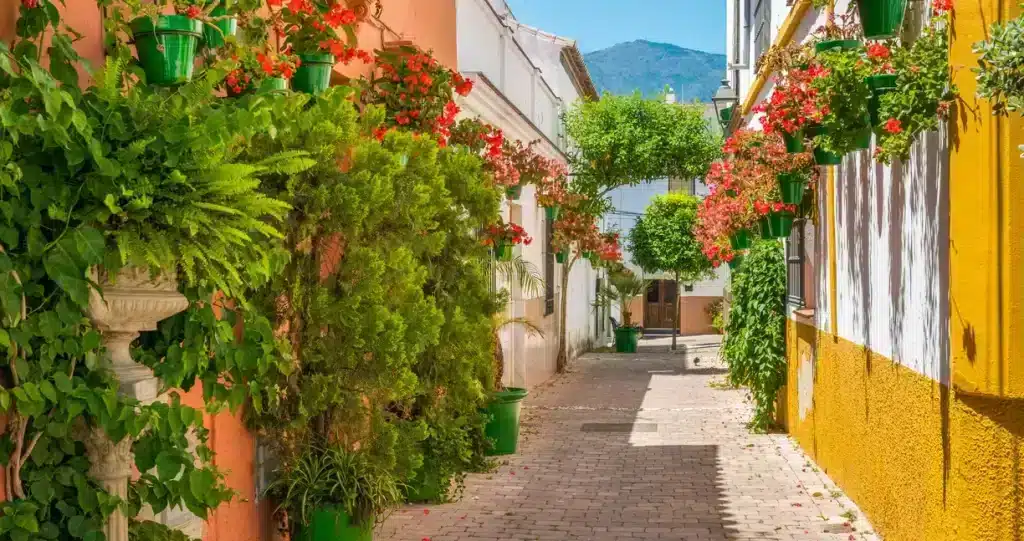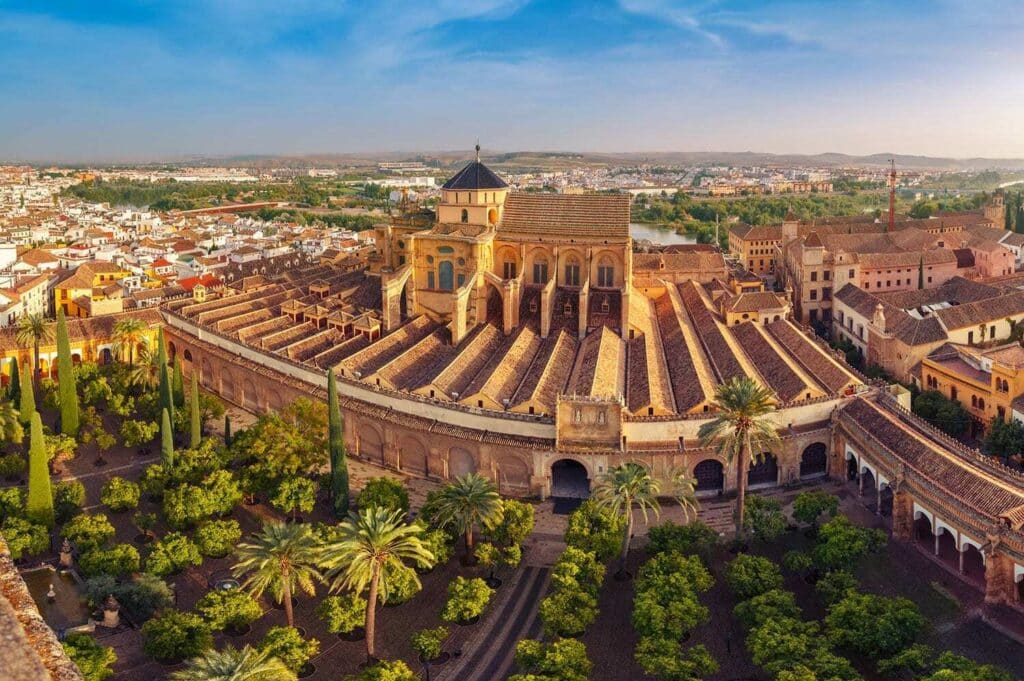Cordoba: Discover the Enchanting History
Cordoba History, with a history of over 5,000 years, traces its roots back to the Chalcolithic period (III/II millennium B.C.). This historic city reached pinnacle moments of splendour as the capital of the Roman Baetica province and during the caliphate of al-Andalus. Its strategic location along the Guadalquivir River, nestled beside the Sierra Morena, made it a vital settlement and a crucial crossroads connecting the South and North of the Iberian Peninsula.
In its pre-Roman era, Corduba was situated on the Cerro de los Quemados (Cruz Conde Park), a slightly elevated terrain that facilitated both defence and control of the river—a vital trade route for minerals extracted from the mountains. This wealth, derived from mining and agriculture, enabled Corduba to evolve from a village of huts during the Final Bronze Age (IX-VIII B.C. centuries) into an urban centre with orientalizing influences (VII-VI B.C. centuries) after the fall of Tartessos preserving a certain level of hierarchy in the region.
History Unearthed: Turdetan Village to Roman Republican City
The Roman arrival didn’t result in a violent rupture with the existing settlement. It’s believed that the Turdetan village coexisted with the Roman camp, eventually giving rise to the republican city located 750 meters to the northeast. The latter became the predominant centre, consolidating as the solely inhabited nucleus by the 1st century B.C.
Despite suffering significant destruction during the Civil War between Caesar and Pompey, Cordoba quickly gained favour with Emperor Augustus, who designated it as the capital of the province of Baetica under the name “Colonia Patricia.” A period of splendour ensued, marked by the city’s expansion, construction of prominent entertainment venues, water collection and drainage systems, and the adornment of public and private spaces—including necropolises—transforming Cordoba into a miniature replica of Rome.

Starting from the third century AD, Corduba reclaimed its original name and underwent initial urban changes, possibly influenced by an earthquake, the construction of the architectural complex of Cercadilla, or its potential appointment as the head of the Hispaniarum diocese. The city’s political and religious prominence gradually waned towards the early 5th century A.D., when Hispalis assumed the role of the new Bética capital. During the Visigothic rule of Cordoba from the late 6th to the early 8th century, a notable development was the emergence of a well-established Christian community manifested in various churches and basilicas.
The Islamic presence in Cordoba, starting from 711 AD, ushered in political, religious, and urban transformations, laying the foundation for a new city model. La Madina retained its distinctive appearance, with continuous upkeep of its fortified walls and the construction of vital infrastructure, most notably the Mezquita-Aljama. Alongside this, the configuration of almunias (suburban estates) and the initial suburbs formed the cornerstone upon which the Cordoba Caliphate (929-1031) would flourish.

The symbolic and propagandistic foundations of the caliphal state fractured around 1009, marking the onset of the fitna (civil war) that persisted until 1031. Cordoba’s history during the Taifa kingdoms and the Almohad period, following the transfer of the capital to Seville, contrasts sharply with its former grandeur. This era ended with the Christian conquest of the city in 1236.

Córdoba, Spain, is a city rich in history and culture, and it offers a wealth of attractions for visitors. Here are some of the best places to visit in Córdoba:
- La Mezquita-Catedral (The Mosque-Cathedral): This iconic monument is one of the most impressive examples of Islamic architecture in Spain. It features a stunning blend of Moorish and Christian design. The forest of columns and the mihrab are particularly noteworthy.
- Alcázar de los Reyes Cristianos (Alcázar of the Christian Monarchs): This historic palace and fortress complex is famous for its beautiful gardens, courtyards, and Roman mosaics. It played a significant role in Spain’s history and served as a residence for Catholic Monarchs.
- Medina Azahara: Just outside Córdoba, you’ll find the ruins of Medina Azahara, an ancient Islamic palace city. It’s a UNESCO World Heritage Site and provides insight into the city’s Moorish past.
- Calleja de las Flores: This charming narrow alley is lined with colourful flowers and traditional white-washed buildings, making it one of the most picturesque spots in Córdoba.
- Synagogue of Córdoba: This historic synagogue is one of the few remaining examples of Jewish architecture in Spain. It features a beautiful blend of styles, including Mudejar and Gothic.
- Roman Bridge and Calahorra Tower: The Roman Bridge is an iconic structure that crosses the Guadalquivir River. The Calahorra Tower on the opposite end houses a museum on the history of Córdoba.
- Palacio de Viana: Known as the “Courtyards Palace,” this historic building features 12 beautifully designed courtyards, each unique. It’s a UNESCO World Heritage Site and a testament to Andalusian architecture.
- Plaza de la Corredera: This lively square is surrounded by colourful buildings, cafes, and restaurants. It’s a great place to relax and soak in the local atmosphere.
- Jewish Quarter (Judería): Wander through the narrow, winding streets of the Jewish Quarter, where you’ll find historic buildings, artisan shops, and excellent local cuisine.
- Archaeological Museum of Córdoba: This museum houses a vast collection of artefacts, including Roman mosaics, sculptures, and Islamic ceramics, providing insights into the city’s diverse history.
- Flamenco Shows: Córdoba is known for its vibrant flamenco culture. Consider attending a live flamenco performance at one of the city’s many tablaos (flamenco venues).
- Mercado Victoria: This modern food market offers a variety of Spanish and international dishes, making it a great place to sample local cuisine.
Córdoba’s rich history and architectural marvels make it a must-visit destination in Spain, offering a unique blend of Moorish and Spanish culture.


